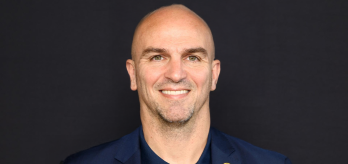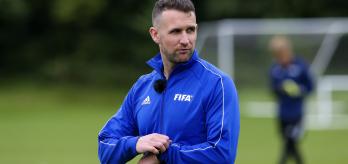To complement his 52 appearances for the Argentina national team, Cambiasso also boasts a total of nine league titles in three different countries and played a pivotal role during FC Internazionale Milano’s treble-winning campaign in 2009/10. Following retirement, the Argentine gained invaluable experience on the coaching staff of José Pékerman with Colombia during 2018 FIFA World Cup Russia™. Here, Cambiasso discusses the importance of tactical awareness and man management, and how these experiences continue to shape his perspective as a coach.
Key points
-
Cambiasso highlights tactical intelligence and communication as defining traits for a centre-midfielder, noting that quick thinking is paramount on the pitch.
-
He explains that communication between team-mates can be more effective at times than physical effort.
-
Cambiasso emphasises that coaching is more about understanding players on a human level to get the most out of them, as opposed to tactical systems.
Watch interview
Read summary
Part 1: The role of a centre-midfielder
As a player, Cambiasso claims that he was full of passion, a consummate professional and tactically aware, noting that, while he wasn’t always the fastest player on the pitch, his quick thinking and anticipation allowed him to stay one step ahead of the game. From the centre, he emphasises the need to be ready to receive the ball and to understand team-mates’ responsibilities to provide a clear picture of how a certain phase of play will develop. Cambiasso stresses that centre-midfielders must act as connectors for the team, while communication is equally as important because, oftentimes, one word can be more valuable than a 20-metre run if it helps to guide players into making the correct decision. This tactical understanding and ability to communicate with other players paved the way naturally for the beginning of Cambiasso’s coaching career.
Part 2: Transition into coaching
Coaching was always in Cambiasso’s future, having completed his UEFA B Licence and A Licence during his time with FC Inter at the esteemed Coverciano, before obtaining his UEFA Pro Licence in Spain shortly after announcing his retirement from the game. He states that his main learning from the process was not tactical, but rather the psychological and communicative side of coaching and management. Reflecting on the biggest influences in his coaching journey, Cambiasso cites Pékerman as a decisive figure, having worked alongside him with the Colombia national team during 2018 FIFA World Cup Russia. This cemented, in Cambiasso’s mind, that players always come first, while acknowledging that his playing career allowed him to see football as a picture. He understands that the game should be viewed from different angles. Cambiasso adds that what excites him most about coaching is convincing players to achieve what they may not believe is possible.























